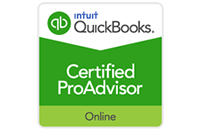Building a company from the ground up is no simple feat. Creating an enduring business requires so much more than a good idea – it requires smart planning, strategic implementation, and a lot of hard work. But once you invest the time and energy to get your company off the ground, there’s something to consider beyond the present: the future.
Someday you’re going to want to retire. And whether you’re planning to hand your business off to your kids, to sell the company off for a tidy profit, or to automate as much as you can and take on a passive role, it’s important to know what your exit strategy is going to be. And like any good escape plan, there are a few things to think about.
Building The Foundation
One of the most obvious steps to creating a solid legacy within your business is to set up a good foundation. Whether you’re a veteran business owner or a brand-new entrepreneur, the key to this step is starting as early as possible. Intentionally designing your business model so that it doesn’t require you is critical – after all, if you want out someday, your business can’t be dependent on you to survive.
With that in mind, the best way to create this baseline is to develop systems for everything that you do. Repeatable models for each and every task associated with keeping your lights on and doors open will go a long way toward empowering you to start delegating and eventually hand over the keys for good.
Think About The Essentials
Another important step in planning for your succession is to identify everything that’s strictly necessary – especially when it comes to critical roles within your company. Figuring out what positions of responsibility are going to be needed to keep things moving will serve you well both now and in the future. And better still, you can identify the key competencies for these roles and keep an eye out for individuals that would make a good fit.
Create A Goal
Like any sound retirement plan, having a date in mind for your exodus will give you a target to work toward. Once you have a timeline in mind, you’ll have an easier time creating benchmarks and establishing concrete milestones to measure your success by. And in addition to managing your own workload, you’ll also be able to let a potential successor know what to expect – and when to expect it.
After you create your goals, the next step is simple – work toward them diligently and keep track of your progress. The best thing you can do to keep yourself on track is to constantly reevaluate how far you’ve come and make adjustments along the way.



